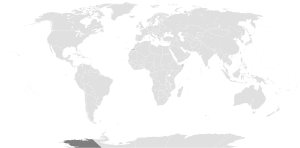
Cartography and mapping, as science or as a discipline in the scientific context, have not escaped postmodern criticism. This is known as the contemporary critique of cartography. Nikolas Huffman has, from the standpoint of map design in postmodernism, analysed maps and mapping within the postmodernistic framework. He addresses the postmodern critique by outlining four different definitions of postmodernism and its relation to contemporary cartographic critiques. These categories are: mapping and postmodern style; cartography and postmodern social theory; capitalism and the economy of mapping; and cartography and poststructuralism (for more details see Huffman 1996).
Huffman mentions some postmodernists in cartography such as Denis Wood, J.B. Harley, Richard Helgerson, Barbara Belyea, and Robert Rundstrom. These authors question the apolitical and scientific status of cartography.
These critiques have disputed the way that language and the production of meaning have been theorized in cartography research on maps and mapping, and introduced new ways of understanding how we interact and communicate with and through maps. […] They have also pointed towards a broader sociology of mapping in which maps and mapping can be understood as artefacts within our social and material culture, and have demanded that greater attention be paid to issues of representation, politics, and social action (emphases added, Huffman 1996: 35–36).
The above statement points out new tendencies in contemporary cartography which fall within the postmodern context. These new ways of understanding maps are referred to as being an alternative to the scientific-empirical approach in cartography during modernity. Thus the map is an artefact (material or ideal) within the social and cultural context in which it is created and used, and is no longer a device with an objective, neutral, and value-free character. In other words, all these new visions in cartography and mapping are framed within the new postpositivistic epistemology of sciences.
 Follow
Follow